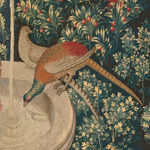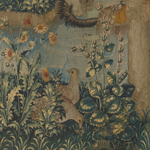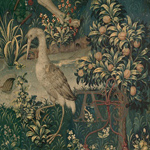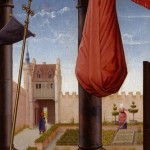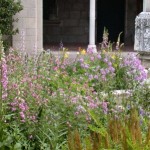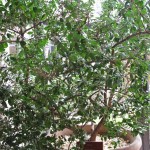Getting Warm
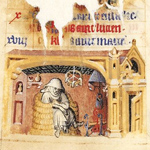 |
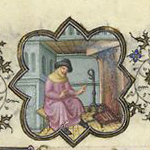 |
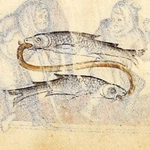 |
Above, from left to right: Detail of the activity for the month from the February calendar page of ??The Hours of Jeanne d’??vreux, ca. 1324???28; detail of the activity for February from the Belles Heures of Jean de France, Duc de Berry, 1405???1408/1409; detail of the zodiacal symbol Pisces from The Hours of Jeanne d’??vreux. See the Heilbrunn Timeline of Art History to learn more about manuscript illumination in Northern Europe, or see special exhibitions for information about the exhibition “The Art of Illumination: The Limbourg Brothers and the Belles Heures of Jean de France, Duc de Berry” (on view at the Main Building March 2 through June 13, 2010).
In the medieval calendar tradition, the month of February is frequently represented by a solitary male figure seated before a fire; he may or may not be cooking his meal as he warms himself. A table set with a few dishes is sometimes placed by the fire, a variant on the theme of feasting common to both January and February. (See “The January Feast,” January 15, 2010). Read more »

